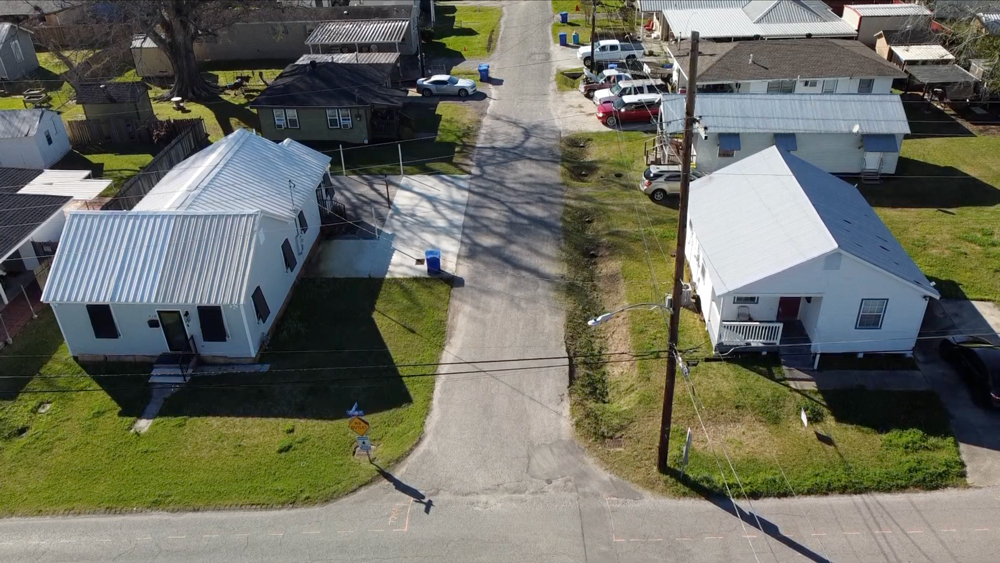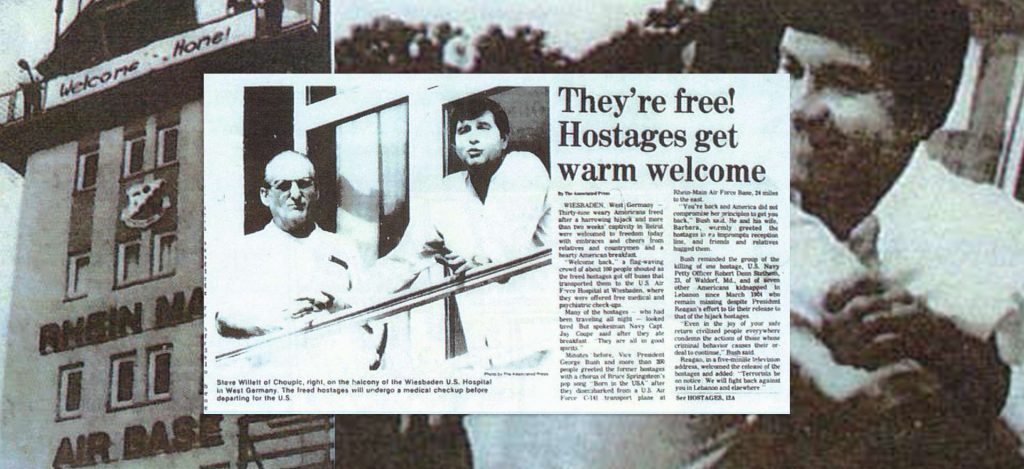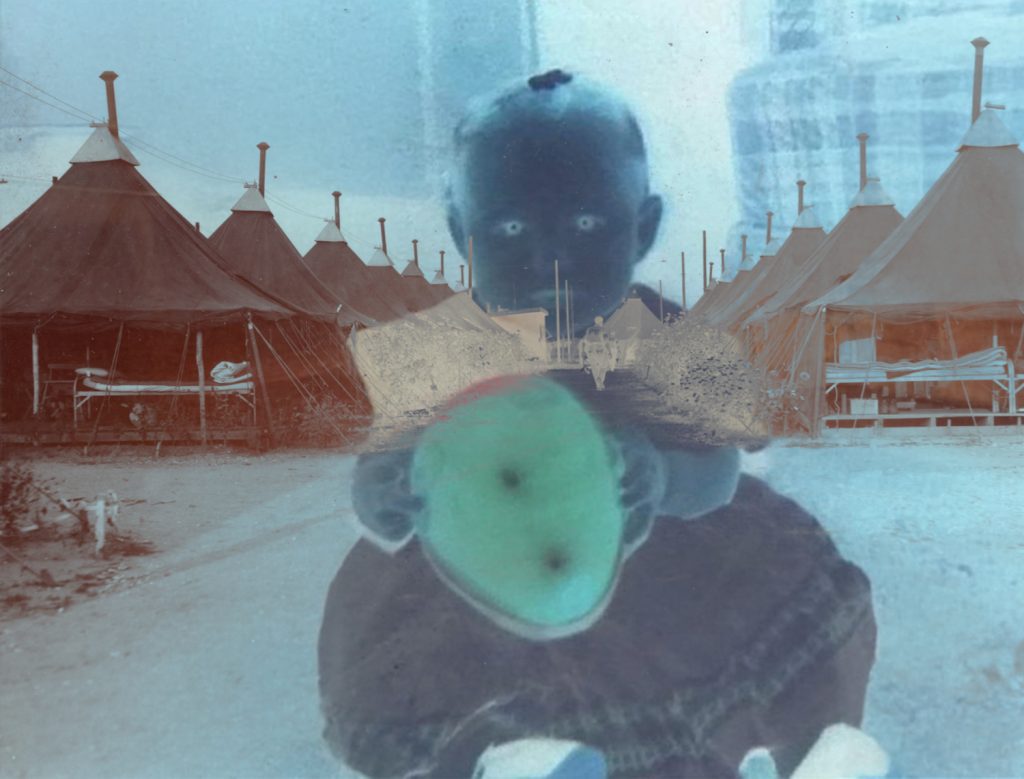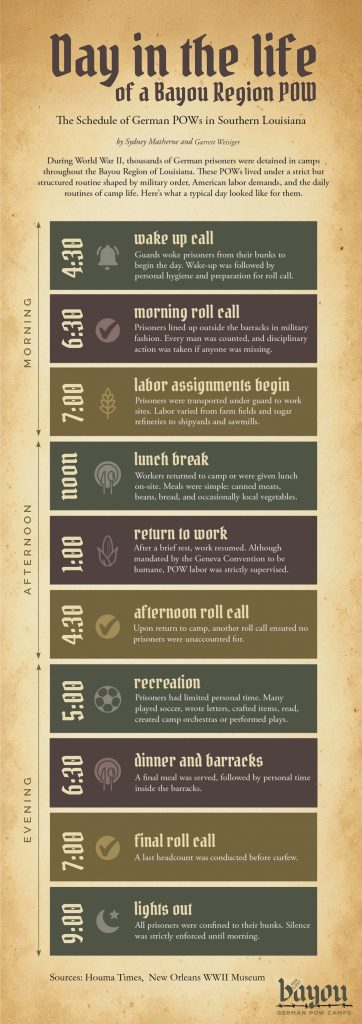The North African Campaign

kade bergeron features editor Prisoners of war engaged in a variety of recreational and creative activities during their time in captivity. From playing soccer and card games to painting and woodworking, these activities offered the prisoners both physical and mental respite. For most of the day, the prisoners of war worked in fields and were occasionally allowed to enjoy recreational activities. Everet Hallback, whose father worked as a mechanic while the POW camps were in South Louisiana, says the prisoners enjoyed playing with the stray dogs while waiting for transportation back to the camps. And some liked to play various card games once they got back to the camps. Glenn Falgoust, a journalist who researched the Donaldsonville POW camps, says, “They played soccer, had a little sports field, and a dance hall.” “They played soccer, had a little sports field, and a dance hall.” Glenn falgoust In addition, some prisoners painted. Linda Theriot, an executive at The Houma Regional Military Museum, says a Houma camp prisoner, Otto Webber, painted multiple paintings, including a self portrait with his son. Some prisoners were interested in woodworking and masonry. “Sometimes there were training walls, like along a ditch or steps up to a house or up a hill,” says Brian Davis, executive director for the Louisiana Trust for Historic Preservation, about the Ruston camp. “Some of them were laid out by prisoners who would do work details out in the community at the time as well.” However, not all activities were physical like playing sports. Some of the activities were there to help the prisoners spiritually or mentally. A few camps allowed Catholic Mass for prisoners. In addition, Theriot says some prisoners may have been taught by teachers employed by their employer’s families — like the Matherne family who employed POWs from one of the Houma camps. The Battle in North Africa Most of the POWs held in Louisiana were captured in North Africa, more than 3,000 miles from their homes in Germany and more than 7,000 miles from Louisiana. Maps of the Axis advances in North Africa 1941. Photo Credit: The United States Military Academy Department of History Allied troops marching through Tunis following Allied success against Axis forces in the African Campaign. Tunis, Tunisia, May 20, 1943. Photo Credit: Library of Congress Panzer tanks of Erwin Rommel_s Africa Corps during an advance against British armed forces. Libya, 1941-1942. Photo Credit: National Archives and Records Administration, College Park, MD A British infantryman capturing a German tank crewman at El Alamein, 1942. Photo Credit: National Army Museum British troops help a wounded German prisoner, 1942. Photo Credit: National Army Museum British troops arrive in Tunis, May 1943, where the German P.O.W.s fought and were captured. Photo Credit: National Army Museum German prisoners of war under guard by a signpost to El Alamein, 1942. Photo Credit: National Army Museum Infantry moving up during 1st Army’s attack on Longstop Hill, Tunisia, April 1943. Photo Credit: National Army Museum New Zealander soldiers capturing Germans, December 3, 1941. Photo-Credit: Imperial War Museums
Life in Germany

Most of the POWs held in Louisiana came from Germany, more than 5,000 miles away from Louisiana. Bastei Bridge (Basteibrucke) with Lilienstein Mountain on background – Bastei, Saxony, Germany City hall of Wernigerode, Germany. Present-day Saxony, Germany, where many-German P.O.W.s originated. Photo Credit: Cheryl Call Dresden Cathedral of the Holy Trinity Hofkirche and Dresden Castle Hausmannsturm on Theaterplatz. Langelsheim, Niedersachsen, Germany. Photo Credit: Wolfgang Weiser Lauenburg-Elbe, Schleswig-Holstein, Germany. Photo Credit: Wolfgang Weiser Small village and Elbe river band in front of Bastei sandstone rocks in Saxony, Germany. kade bergeron features editor Prisoners of war engaged in a variety of recreational and creative activities during their time in captivity. From playing soccer and card games to painting and woodworking, these activities offered the prisoners both physical and mental respite. For most of the day, the prisoners of war worked in fields and were occasionally allowed to enjoy recreational activities. Everet Hallback, whose father worked as a mechanic while the POW camps were in South Louisiana, says the prisoners enjoyed playing with the stray dogs while waiting for transportation back to the camps. And some liked to play various card games once they got back to the camps. Glenn Falgoust, a journalist who researched the Donaldsonville POW camps, says, “They played soccer, had a little sports field, and a dance hall.” “They played soccer, had a little sports field, and a dance hall.” Glenn falgoust In addition, some prisoners painted. Linda Theriot, an executive at The Houma Regional Military Museum, says a Houma camp prisoner, Otto Webber, painted multiple paintings, including a self portrait with his son. Some prisoners were interested in woodworking and masonry. “Sometimes there were training walls, like along a ditch or steps up to a house or up a hill,” says Brian Davis, executive director for the Louisiana Trust for Historic Preservation, about the Ruston camp. “Some of them were laid out by prisoners who would do work details out in the community at the time as well.” However, not all activities were physical like playing sports. Some of the activities were there to help the prisoners spiritually or mentally. A few camps allowed Catholic Mass for prisoners. In addition, Theriot says some prisoners may have been taught by teachers employed by their employer’s families — like the Matherne family who employed POWs from one of the Houma camps. Most of the POWs held in Louisiana came from Germany, more than 5,000 miles away from Louisiana. Bastei Bridge (Basteibrucke) with Lilienstein Mountain on background – Bastei, Saxony, Germany City hall of Wernigerode, Germany. Present-day Saxony, Germany, where many-German P.O.W.s originated. Photo Credit: Cheryl Call Dresden Cathedral of the Holy Trinity Hofkirche and Dresden Castle Hausmannsturm on Theaterplatz. Langelsheim, Niedersachsen, Germany. Photo Credit: Wolfgang Weiser Lauenburg-Elbe, Schleswig-Holstein, Germany. Photo Credit: Wolfgang Weiser Small village and Elbe river band in front of Bastei sandstone rocks in Saxony, Germany.
The Donaldsonville Camp: Escape Attempts

jacob levron staff Glenn Falgoust lives in Napoleonville, Louisiana, and has researched the Donaldsonville German POW camp extensively. Stan Duvall
Thibodaux Camp: What’s Left

Jacob Levron staff
Terrorism & Meeting a Former POW

Jacob Levron staff Thibodaux native Steve Willett was on a European vacation with his family in 1985 when their plane was hijacked. Willett’s hostage story takes him to a hospital in Germany where he met a former German POW who had been at the Thibodaux POW camp. Steve Willett’s Journal The hostage story Click to see full image and read page
Camp Ghost Stories

jalaysia sanders podcast editor April Cortez April Cortez as a child April Cortez
POWs in the Media

German POWs during World War II had a lasting impact on Louisiana and the United States. These stories live on through books, films and plays. Books about Louisiana Fish Out of Water A book about Nazi submariners as prisoners in North Louisiana during World War II. WWII in the Gulf of Mexico C.J. Christ’s research into the German U-boat menace in the Gulf of Mexico during World War II. German POWS in Books The Barbed-Wire College: Reeducating German POWs in the United States During World War II Ron Robin The Faustball Tunnel: German POWs in America and Their Great Escape John Hammond Moore The Fifteen: Murder, Retribution, and the Forgotten Story of Nazi POWs in America William Geroux German POWs, Der Ruf, and the Genesis of Group 47: The Political Journey of Alfred Andersch and Hans Werner Richter Aaron D. Horton Guests Behind the Barbed Wire Ruth Beaumont Cook My Journey of Captivity: The Story of a German POW Helga McKee Nazi POWs in the Tar Heel State Robert D. Billinger Jr. Nazi Prisoners of War in America Arnold Krammer Secrets of a German POW: The Capture and Interrogation of Hauptmann Herbert Clef Brian Brinkworth War, Spies & Bobby Sox (The Saga Series) Libby Fischer Hellmann German POWS in Film Fort McCoy 2011 Film: A drama based on a true story when the Stirn family lived next to a Nazi POW camp in Wisconsin during W.W.II. Camp Confidential: America’s Secret Nazis 2021 Animated Short: WWII vets reveal a secret US military camp near Washington where Jewish soldiers hosted and interrogated Nazi POWs. The Front 2018 Film: By the end of World War II, Frank Aldridge, a war correspondent sent by the United Nations, interviews German prisoners in an allied camp. Splinters of a Nation 2016 Documentary: The story of German POWs Utah. Decision Before Dawn 1951 Film: As the US Army approaches Nazi Germany, they recruit German prisoners of war to spy behind German lines. The Enemy in Our Midst 2004 Documentary: Nazi Prisoner of War Camps in Michigan’s Upper Peninsula. History Detectives 2005 Season 3, Episode 2: Investigates a German POW camp in Texas. Back in Time: Oklahoma’s Nazi Prisoners 2025 Season 14, Episode 3: During World War II, 22,000 captured German soldiers were held captive in Oklahoma. Beets Play: Farmers using German POW to help grow crops in Colorado. Original premiere in 2009 Learn More
Childhood Memories of the Bayou POW Camps

jalaysia sanders podcast editor The POW camps shut down in 1946 — 79 years ago, leaving few who have personal memories from the camps. But some in the Bayou Region have memories as children. Stan Duvall Richard Barker David Plater
German POWs: A Day in the Life

Axis vs. Allied POW Camps

madison blanchard staff writer During World War II, thousands of American and German soldiers were held as prisoners of war (POWs). American POWs held in Germany, Italy and Japan endured much harsher treatment than German POWs held in the United States. More than 90,000 American POWs were held in Germany, while about 450,000 Axis prisoners — German, Italian and Japanese — were held in the United States during World War II, according to official military statistics. The 1929 Geneva Convention established regulations to ensure safety and equal treatment for prisoners held in any location. The regulations ensured that POWs were treated humanely, allowed to communicate with their families and protected from harsh punishment or discipline. “My father was one of three men from Raceland who were held in Stalag, which was a German prison camp,” says John Robichaux, whose father was an American soldier captured in Germany. “He [his father] said they were not treated too poorly, but they would often have to stand in the freezing cold for hours on end and food was in short supply, so they would eat meat and didn’t know what it was — could have been horse or donkey meat, but they were starving so it didn’t matter.” The rough conditions faced by American POWs in Germany were typically not due to a disregard for the Geneva Convention regulations, as the Germans respected this regard. American POWs were treated worse due to a lack of supplies and necessities that were available to Axis POWs held in the United States. The location of captivity played a significant role in how POWs were treated, according to the article “How were prisoners of war treated in WW2?” by Civil War. In the later years of the war, POWs suffered food shortages, overcrowding and deteriorating infrastructure. POWs in rural Germany or the United States were more likely to receive adequate housing and food supplies than those captured in other areas. “America had a better record of treating POWs than any other country, and Japan had the worst,” says Paul Wilson, head of the history department at Nicholls State University. “The death rate of American POWs in Germany was around 1-2 percent, while in Japan it was nearly 30-40 percent.” “America had a better record of treating POWs than any other country, and Japan had the worst. The death rate of American POWs in Germany was around 1-2 percent, while in Japan it was nearly 30-40 percent.” Paul Wilson American POWs being sent to Berga slave labor camp in Germany. Photo Credit: National Archives Barracks in Stalag Luft where American POWs were held. Photo Credit: National WW2 Museum, Liberation Stalag Luft Collection Two German POWs at the Thibodaux campsite. Photo Credit: Evert Halbach Collection, Nicholls Archives & Special Collections German POWs taking a break from working in the Thibodaux cane fields. Photo Credit: Evert Halbach Collection, Nicholls Archives & Special Collections Group photo of German POWs in the cane fields in Thibodaux. Photo Credit: Evert Halbach Collection, Nicholls Archives & Special Collections
